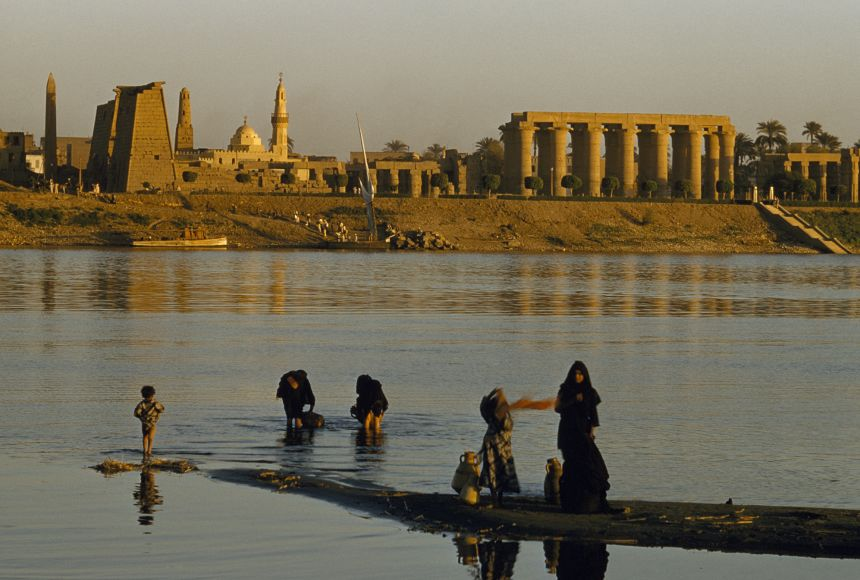
The Nile River flows from south to north through eastern Africa. It begins in the rivers that flow into Lake Victoria (located in modern-day Uganda, Tanzania, and Kenya), and empties into the Mediterranean Sea more than 6,600 kilometers to the north, making it one of the longest rivers in the world. The Nile River was critical to the development of ancient Egypt. In addition to Egypt, the Nile runs through or along the border of Burundi, Tanzania, Rwanda, the Democratic Republic of the Congo, Kenya, Uganda, Sudan, Ethiopia, and South Sudan.
For thousands of years, much of Egypt’s food has been grown in the Nile delta region. Ancient Egyptians developed irrigation methods to increase the amount of land they could use for crops and support an increasing population. The Nile River delta was also an ideal growing location for the papyrus (纸莎草) plant. Ancient Egyptians used the papyrus plant in many ways, such as making cloth, boxes, and rope, but by far its most important use was in making paper. Besides using the river’s natural resources for themselves and trading them with others, early Egyptians also used the river for bathing, drinking, recreation, and transportation.
Today, 95 percent of Egyptians live within a few kilometers of the Nile. Canals bring water from the Nile to irrigate farms and support cities. The Nile supports agriculture and fishing. The Nile also has served as an important transportation route for thousands of years. Today, some residents of Cairo have begun using private speed boats, or water taxis, to avoid crowded streets. Dams, such as the Aswân High Dam in Egypt, have been built to help to control the river and provide a source of hydroelectric (水力发电的) power.
However, the silt and sediment (淤泥和沉积物) that used to flow north are now building up behind the dam instead. In addition, routine annual flooding no longer occurs along parts of the Nile. These floods were necessary to flush the water of human and agricultural waste. As a result, the water is becoming more polluted.
1.What is not mentioned about the Nile River in the first paragraph?
A The distance it travels.
B The deepest part of it.
C The direction in which its water flows.
D The countries through which it flows.
解析:选B。B细节理解题。根据第一段中的描述可知,本段中提到了尼罗河的流向、长度以及流经国家,并未提及河流最深的部分。故选B。
2.What’s the main idea of Para. 2?
A What ancient Egyptians did on the river.
B The Nile River’s roles to ancient Egyptians.
C Why the papyrus plant is important in Egypt.
D How Ancient Egyptians planted crops and plants.
解析:选B。B段落大意题。根据第二段中的关键词句“much of Egypt’s food has been grown in the Nile delta region”“The Nile River delta was also an ideal growing location for the papyrus (纸莎草) plant”以及最后一句可知,本段主要描述了尼罗河对于古埃及人的各种各样的作用。故选B。
3.Which has the closest meaning to the underlined word “flush”?
A Acquire.
B Drag.
C Waste.
D Clean.
解析:选D。D词义猜测题。根据划线部分后面的“As a result, the water is becoming more polluted.”可知,尼罗河部分地区不再发生常规的年度洪水,结果水的污染越来越严重,因此可推知这些洪水是清洁人类和农业废水所必需的。故选D。
4.What is the purpose of the text?
A To recommend a travel destination.
B To remember ancient Egyptians.
C To introduce an important river.
D To explain a natural phenomenon.
解析:选C。C推理判断题。本文主要介绍了世界上最长的河流——尼罗河的相关情况。故选C。